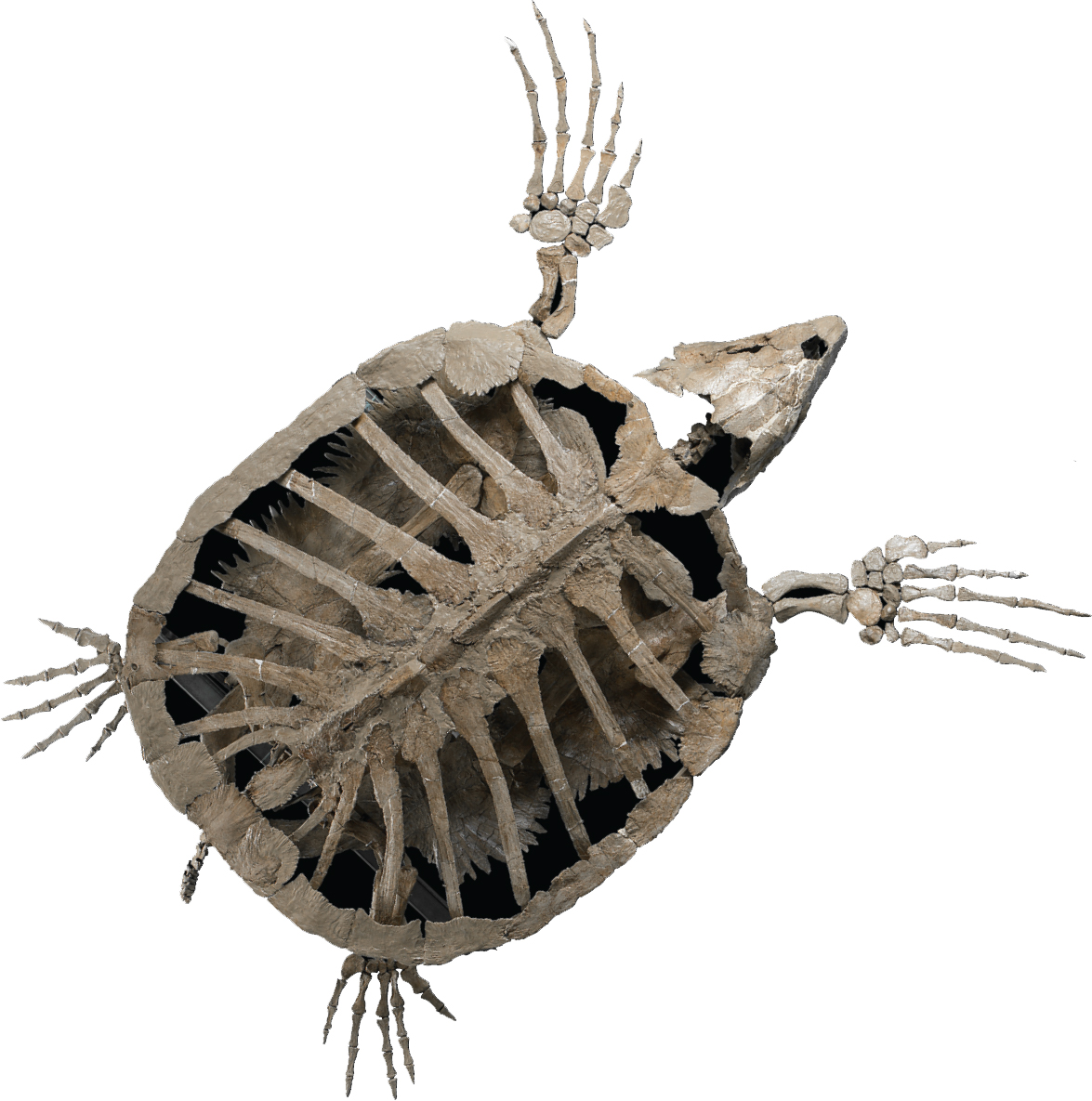

During the Cretaceous Period, starting about 145 million years ago, vast inland seas covering portions of continents abounded in plankton, providing fuel for the seas’ ecosystems. These waters became the site of new conflicts between predators and prey, especially shelled animals. Aquatic lizards such as mosasaurs evolved flexible jaws and crushing teeth, along with flippers and tail flukes. Mollusks developed harder shells in carbon dioxide–rich water and added intimidating spines; some cephalopods lost their shells to gain greater mobility. At this time, several groups of terrestrial turtles moved into the sea, evolving a lightweight shell. Some, like Protostega, became one-ton giants.

Placenticeras meeki, an ammonite, lived close to the end of its group’s time on Earth. It was preyed upon by marine reptiles until a mass extinction extinguished all the ammonites.

One of the largest mosasaurs, at up to 50 feet long, Tylosaurus proriger terrorized the Western Interior Seaway of North America, preying on pretty much anything else that swam.

Related to living leatherback sea turtles, giant Protostega gigas weighed more than 2,000 pounds.

Like all ammonites, loosely coiled Didymoceras stevensoni was a distant relative of squids. Ammonites endured on Earth for about as long as dinosaurs did.